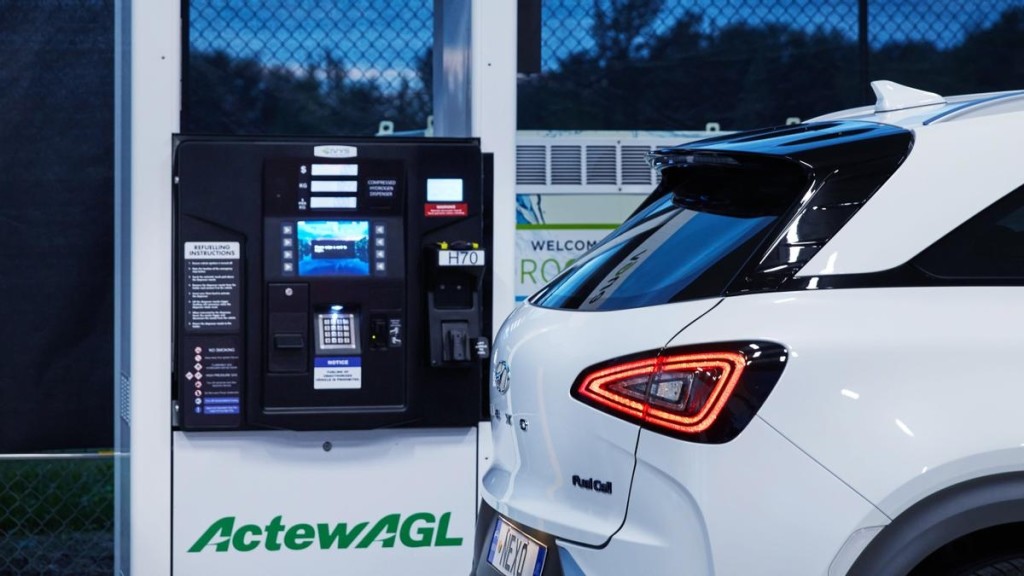The first hydrogen refuelling station available to the public has opened in Fyshwick, just outside of the Canberra CBD, which is responsible for refuelling government vehicles.
Operated by ActewAGL, a subsidiary of AGL Energy, the hydrogen refuelling plant opening is a major milestone for the rollout of zero-emission vehicles in the ACT.
The ACT government will use this refuelling station to service the first government fleet of hydrogen vehicles, 20 Hyundai Nexos, which and was registered in early March this year.
The opening of the public hydrogen refuelling station is the next step in the ACT government’s transition to achieving 100% of its passenger fleet to zero-emissions vehicles, where applicable and fit for purpose.
The fuelling station produces its own hydrogen gas on-site by catching rainwater and using specialist equipment to create the fuel, which is powered by 100 per cent renewable energy.

Hydrogen fuel cell vehicles, also known as fuel cell electric vehicles (FCEV), have many benefits, which include:
– Shorter refuelling times
– A longer-range compared to their battery electric counterparts
– Purifying the air as they drive, which aids in removing harmful particulates produced by petrol and diesel cars
Hydrogen is sold by the kilogram, with pricing at the pump sitting at about $10-$15 per kg. It takes only five minutes to refuel a Hyundai Nexo from an empty tank, with approximately 6kg of hydrogen gas.
The average cost of a single refuel is about $90, which allows the Nexo to travel a purported 666kms.
“We need to transition to zero-emissions vehicles as soon as we can,” Attorney-General of the ACT and Minister for Climate Change and Sustainability Shane Rattenbury told the media at the Australian launch of the Hyundai Nexo.
“More than 60 per cent of emissions come from transport (in the ACT). A zero-emissions government fleet will be practical within three years.”
The ACT government currently has a fleet of Hyundai Ioniq vehicles that are being utilised by public servants.
Hyundai claims that their electric vehicles have seen an “80 per cent reduction” in running costs compared to internal combustion engines (ICE) in the same fleet.
Attorney-General Rattenbury voiced that he would like to see the ACT achieve net zero-emissions by 2045 despite the ACT being supplied 100 per cent renewable energy in 2020.
Read more on the differences between


